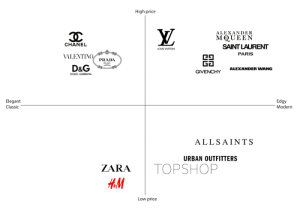
Embark on a journey delving into the world of branding and marketing integration, where powerful strategies converge to elevate brands to new heights of success.
Uncover the seamless fusion of branding and marketing, unlocking the key to creating a lasting impression in the minds of consumers.
Introduction to Branding and Marketing Integration

Branding and marketing are essential components of a successful business strategy. Branding involves creating a unique identity for a product or service, while marketing focuses on promoting and selling that product or service to consumers. Integrating branding with marketing strategies is crucial for building brand awareness, loyalty, and trust among customers. By aligning branding elements such as logo, messaging, and values with marketing tactics like advertising, social media, and promotions, companies can create a cohesive and impactful brand presence in the market.
Examples of Successful Brand and Marketing Integration Initiatives
- Apple: Apple’s branding emphasizes innovation, simplicity, and design excellence, which is consistently reflected in their marketing campaigns. From their sleek product designs to their minimalist advertising, Apple maintains a strong brand identity that resonates with consumers.
- Nike: Nike’s “Just Do It” slogan has become synonymous with their brand, and it is effectively integrated into all their marketing efforts. Whether it’s in their commercials, social media posts, or product packaging, Nike’s branding message of empowerment and athleticism is always front and center.
- Coca-Cola: Coca-Cola’s iconic red and white logo is instantly recognizable worldwide, and it is a key element in their marketing strategy. By incorporating the logo into all their advertising, sponsorships, and promotions, Coca-Cola reinforces its brand image of happiness, togetherness, and refreshment.
Benefits of Branding and Marketing Integration
Integrated branding and marketing can significantly benefit a company in various ways. It helps in creating a cohesive brand identity, building brand loyalty and customer engagement, as well as increasing brand visibility and recognition.
Creating a Cohesive Brand Identity
Integrated branding and marketing ensure that all communication channels and touchpoints are aligned with the brand’s values, messaging, and visuals. This consistency helps in creating a strong and recognizable brand identity that resonates with customers.
Building Brand Loyalty and Customer Engagement
By presenting a unified brand image across all marketing channels, companies can build trust and loyalty among customers. Consistent messaging and experiences foster a sense of connection with the brand, leading to higher customer engagement and repeat purchases.
Increased Brand Visibility and Recognition
When branding and marketing efforts are integrated, the brand’s message reaches a wider audience in a consistent manner. This increased visibility helps in creating brand recognition and recall among consumers, making the brand more memorable in a crowded marketplace.
Strategies for Effective Branding and Marketing Integration
Effective branding and marketing integration requires careful planning and execution to ensure consistency and coherence across all channels. By aligning brand messaging with marketing campaigns and maintaining brand integrity, businesses can create a strong and memorable brand identity that resonates with their target audience.
Aligning Brand Messaging with Marketing Campaigns
When aligning brand messaging with marketing campaigns, it is essential to ensure that the core values, mission, and voice of the brand are reflected in all communication channels. This can be achieved through the following steps:
- Define clear brand guidelines: Establish a set of guidelines that Artikel the brand’s tone, style, and messaging to maintain consistency across all marketing materials.
- Create a cohesive brand story: Develop a compelling narrative that communicates the brand’s unique selling proposition and resonates with the target audience.
- Integrate brand messaging into all marketing channels: Ensure that the brand’s messaging is consistent across social media, email marketing, advertising, and other channels to create a unified brand experience.
Role of Consistent Branding Across Different Marketing Channels
Consistent branding across different marketing channels helps to reinforce brand recognition and trust among consumers. By maintaining a unified brand identity, businesses can:
- Build brand loyalty: Consistent branding fosters a sense of familiarity and trust with consumers, leading to increased loyalty and repeat business.
- Enhance brand visibility: A cohesive brand presence across multiple channels increases brand visibility and awareness, making it easier for consumers to recognize and engage with the brand.
- Establish brand authority: Consistent branding conveys professionalism and reliability, positioning the brand as an authority in its industry.
Tips for Maintaining Brand Integrity While Implementing Marketing Strategies
To maintain brand integrity while implementing marketing strategies, businesses should:
- Monitor brand consistency: Regularly review marketing materials and campaigns to ensure they align with the brand guidelines and maintain brand integrity.
- Train staff on brand standards: Educate employees on the importance of brand consistency and provide training on how to effectively communicate the brand message.
- Seek feedback from customers: Gather feedback from customers to gauge their perception of the brand and make adjustments as needed to align with their expectations.
Impact of Branding and Marketing Integration on E-commerce
Branding and marketing integration play a crucial role in the success of e-commerce businesses. Let’s delve into how this integration can significantly impact e-commerce sales and customer trust.
Enhancing E-commerce Sales
Integrated branding and marketing efforts can lead to increased visibility and recognition for e-commerce brands. By ensuring consistency in messaging, design, and customer experience across all touchpoints, businesses can effectively attract and retain customers. This cohesive approach helps build brand loyalty and drives sales through repeat purchases and word-of-mouth referrals.
Establishing Trust and Credibility
In the competitive landscape of online retail, trust and credibility are paramount. A strong brand identity instills confidence in consumers and differentiates a business from its competitors. By integrating branding elements such as logo, color palette, and brand voice into marketing campaigns, e-commerce brands can create a sense of familiarity and reliability. This, in turn, establishes trust with customers and encourages them to make purchases.
Examples of Successful E-commerce Brands
One notable example of successful branding and marketing integration in e-commerce is Amazon. The e-commerce giant has built a powerful brand that is synonymous with convenience, reliability, and a vast product selection. Through strategic marketing initiatives that reinforce its brand values, Amazon has become a trusted destination for online shopping worldwide.Another example is Shopify, a platform that enables businesses to create their own e-commerce websites.
Shopify’s branding emphasizes simplicity, customization, and growth, resonating with entrepreneurs looking to establish their online presence. By aligning its marketing efforts with these brand attributes, Shopify has successfully attracted a loyal customer base and positioned itself as a leader in the e-commerce industry.
Role of Affiliate Marketing in Branding and Marketing Integration
Affiliate marketing plays a crucial role in integrating branding and marketing efforts by leveraging external partners to promote brand awareness and drive sales. Let’s explore how affiliate marketing can be effectively utilized in brand integration.
Promoting Brand Awareness
Affiliate marketing helps in expanding the reach of a brand by collaborating with affiliates who promote products or services to their audience. This exposure to new customer segments enhances brand visibility and recognition in the market.
- Affiliates can create content that aligns with the brand’s messaging and values, effectively communicating the brand story to their followers.
- By partnering with relevant influencers and bloggers, brands can reach a more targeted audience that is likely to be interested in their offerings.
- Affiliate marketing campaigns can include sponsored posts, reviews, and social media promotions that showcase the brand in a positive light.
Aligning Affiliate Marketing with Brand Messaging
To ensure consistency in branding and marketing integration, it is essential to align affiliate marketing strategies with the overall brand messaging. This can be achieved by:
- Providing affiliates with brand guidelines and key messaging points to maintain brand identity across all promotional materials.
- Collaborating with affiliates who share the brand’s values and ethos, ensuring that their content resonates with the brand’s target audience.
- Monitoring affiliate activities closely to ensure that their promotional efforts are in line with the brand’s image and reputation.
Measuring Success of Affiliate Marketing Campaigns
Tracking the performance of affiliate marketing campaigns is crucial for evaluating their impact on brand integration. Key metrics for measuring success include:
- Conversion rates: Monitoring the number of sales generated through affiliate links to gauge the effectiveness of the campaigns.
- Click-through rates: Analyzing the engagement levels of affiliate promotions and the interest generated among the audience.
- Return on investment (ROI): Calculating the revenue generated compared to the investment made in affiliate marketing to determine the campaign’s profitability.
Direct Marketing Strategies for Branding and Marketing Integration
Direct marketing plays a crucial role in reinforcing brand messaging and building brand awareness. By leveraging personalized direct marketing tactics, businesses can create stronger connections with their target audience and drive brand loyalty. Let’s explore how direct marketing strategies can be effectively integrated into branding efforts.
Importance of Personalized Direct Marketing in Brand Building
Personalized direct marketing is essential for building a strong brand identity and establishing a meaningful relationship with customers. By tailoring marketing messages and offers to individual preferences and behaviors, brands can create a more personalized and engaging experience for their audience. This not only helps in increasing brand loyalty but also drives higher conversion rates and customer retention.
- Utilize customer data to create personalized marketing campaigns that resonate with your target audience.
- Segment your audience based on demographics, behavior, and preferences to deliver targeted and relevant messages.
- Implement personalized email marketing campaigns with dynamic content and product recommendations based on customer interactions.
- Create personalized direct mail campaigns with customized offers and messaging to capture the attention of your audience.
Examples of Direct Marketing Campaigns that Successfully Integrated Branding
Direct marketing campaigns that effectively integrate branding focus on delivering a consistent brand message across all touchpoints. Here are some examples of successful direct marketing campaigns that have reinforced brand messaging:
1. Coca-Cola’s “Share a Coke” campaign personalized their product packaging with individual names, creating a unique and memorable experience for customers.
2. Amazon’s personalized recommendation emails based on customer browsing and purchase history create a tailored shopping experience, strengthening brand loyalty.
3. Nike’s direct mail campaigns targeting specific customer segments with personalized offers and content showcase the brand’s commitment to individual empowerment and performance.
Leveraging Internet Marketing for Branding and Marketing Integration
In today’s digital age, leveraging internet marketing is crucial for integrating branding and marketing efforts. By utilizing various online channels, businesses can effectively promote their brand, engage with their target audience, and strengthen brand identity.
Role of in Brand Integration
Search Engine Optimization () plays a vital role in brand integration by improving the visibility of a brand’s website in search engine results. By optimizing website content with relevant s, meta tags, and quality backlinks, businesses can attract organic traffic and enhance brand awareness.
- Optimizing website content with relevant s
- Creating high-quality backlinks from reputable websites
- Improving website loading speed and mobile responsiveness
Role of Social Media in Brand Integration
Social media platforms provide a powerful tool for brand promotion and customer engagement. By creating compelling content, interacting with followers, and running targeted advertising campaigns, businesses can build a loyal online community and establish a strong brand presence.
- Creating engaging posts and visuals to attract followers
- Interacting with followers through comments and messages
- Utilizing social media analytics to track performance and optimize strategies
Role of Content Marketing in Brand Integration
Content marketing involves creating and distributing valuable, relevant content to attract and retain a specific audience. By producing informative blog posts, videos, infographics, and other content types, businesses can showcase their expertise, build credibility, and strengthen brand reputation.
- Developing a content calendar to plan and schedule content creation
- Collaborating with influencers and industry experts to reach a wider audience
- Repurposing content across multiple channels for maximum exposure
Importance of Mailing Lists in Branding and Marketing Integration

Maintaining effective communication with customers is crucial for reinforcing brand messaging and building customer loyalty. Mailing lists play a vital role in integrating branding and marketing strategies, especially through email marketing. Let’s delve into the significance of mailing lists in branding and marketing integration.
Utilizing Mailing Lists for Brand Communication
- Mailing lists allow businesses to directly reach out to their customers with personalized messages, updates, and promotions, keeping the brand top-of-mind.
- Regularly sending emails to subscribers helps in nurturing relationships, enhancing brand recall, and fostering customer engagement.
- Segmenting mailing lists based on customer preferences and behavior enables targeted communication, ensuring relevance and increasing the effectiveness of marketing campaigns.
Benefits of Email Marketing for Brand Messaging
- Email marketing is a cost-effective way to deliver branded content, product information, and promotional offers directly to customers’ inboxes.
- Through email campaigns, businesses can reinforce brand identity, showcase brand values, and establish a consistent brand voice across all communications.
- Measurable metrics such as open rates, click-through rates, and conversion rates provide valuable insights into the effectiveness of brand messaging and allow for optimization.
Tips for Integrating Mailing Lists into Marketing Strategies
- Ensure that the content of your emails aligns with your overall brand messaging and reflects your brand’s personality and values.
- Use compelling subject lines and personalized content to capture the attention of recipients and encourage them to engage with your emails.
- Regularly review and update your mailing list to maintain its quality, relevance, and effectiveness in reaching and engaging with your target audience.
Conclusive Thoughts
In conclusion, the symbiotic relationship between branding and marketing emerges as a vital force in shaping brand identity and driving business growth in today’s competitive landscape.
Detailed FAQs
How can integrated branding and marketing benefit a business?
Integrated branding and marketing can create a unified brand identity, enhance customer engagement, and boost brand visibility.
Why is maintaining brand integrity important in marketing strategies?
Maintaining brand integrity ensures consistency in messaging across different channels, reinforcing brand image and consumer trust.
What role does affiliate marketing play in promoting brand awareness?
Affiliate marketing can help expand brand reach by leveraging partners to promote products or services, increasing brand visibility.
How can mailing lists contribute to branding and marketing integration?
Mailing lists enable businesses to maintain direct communication with customers, reinforcing brand messaging and enhancing customer relationships.






